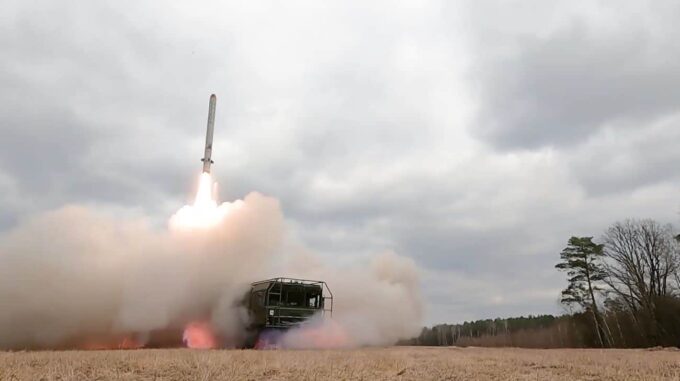Russia has carried out a large-scale modernization of its Iskander-M ballistic missiles, which has a significant impact on the security situation in the region and complicates the Ukrainian defense capabilities

This was reported by Yuriy Ignat, spokesperson of the Ukrainian Air Force, during a telethon, adding that these missile systems have received a technological upgrade that makes their neutralization more difficult for missile defense systems, particularly American Patriot systems. According to Ignat, Russian specialists have employed a method involving radar decoys—special traps that imitate the radar signature of a missile, allowing the target tracking systems to be fooled and making precise interception more difficult. This means that the Iskander-M missiles can now maneuver during flight, performing various maneuvers and deviations from their original trajectory. "Ballistic missiles—specifically the Iskander-M—are what we are talking about when referring to the missile threat. However, these weapons have now been upgraded and modernized: one of their main innovations is the use of radar decoys. These are special signals that imitate the real radar echo of a missile but are actually decoys. Additionally, these quasi-missiles—moving along so-called quasi-trajectories with significantly different flight paths—are capable of performing various maneuvers, which further complicates their interception by systems like Patriot," Ignat explained. This technical modernization is of a strategic nature and, according to the expert, significantly reduces the effectiveness of missile defense systems and complicates their interception efforts. The Patriot system, which previously successfully intercepted ballistic missiles, now, with the introduction of new tactics by Russian missiles, becomes less reliable. This will require further improvements in the armed forces of Ukraine and partner countries. These events followed a large-scale Russian missile attack on Saturday night, during which Russia launched 14 ballistic missiles and approximately 250 drones of various types. According to official Ukrainian sources, six ballistic missiles and 128 drones were shot down. The remaining 117 drones were suppressed by electronic warfare (EW) systems and other means, although some were still used successfully against targets remaining on Ukrainian territory. These events indicate an escalation in Russian tactics, which include not only active modernization of their missile systems but also the use of advanced technical measures to confuse interception systems. This demands a strategic reorientation and continuous adaptation of Ukraine’s defense systems to new challenges. Overall, the technical changes in Russian weaponry demonstrate their intention to maintain dominance in high-precision missile attacks and to complicate Ukraine and its allies’ air defense operations. Meanwhile, Ukrainian experts and military personnel continue to work on improving their systems and tactics to counter these new challenges on the battlefield effectively.

